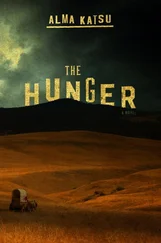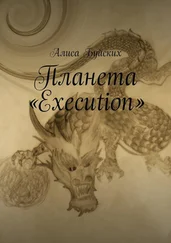IN THE collective farm, our personal existence became completely dependent upon the dictates of the Communist Party, and on the whims of the local officials. Every detail of our life was supervised. Our daily routine was subject to the strictest regimentation. We had to obey orders without any protest, and without giving any thought as to their sense or purpose. A vast system of secret police, spies, and agents provocateurs watched our every move.
We were always suspected of treason. Even sadness or happiness were causes for suspicion. Sadness was thought of as an indication of dissatisfaction with our life, while happiness, regardless of how sporadic, spontaneous, or fleeting, was considered to be a dangerous phenomenon that could destroy the devotion to the Communist cause. You had to be cautious about the display of feelings at all times, and in every place. We were all made to understand that we would be allowed to live only as long as we followed the Party line, both in our private and social lives.
By this time—after only two years of compulsory collectivization—normal human relations had broken down completely. Neighbors had been made to spy on neighbors; friends had been forced to betray friends; children had been coached to denounce their parents; and even family members avoided meeting each other. The warm traditional hospitality of the villagers had disappeared, to be replaced by mistrust and suspicion. Fear became our constant companion: it was an awesome dread of standing helplessly and hopelessly alone before the monstrous power of the State.
The Communist Party organization, the general membership meeting, and the Board of Managers were the collective farm’s governing bodies. The Auditorial Commission and the kolhosp court carried the auxiliary functions of controlling and punishing. The Komsomol and Komnezam (this organization of poor farmers continued its existence even after collectivization) gave organizational support to the Party. Other organizations, duplicating village-wide ones, as well as all kinds of secret and nonsecret agents, agitators, propagandists, and activists, were used by the governing bodies to check the pulse of the members of the collective farm.
The local policy on the collective farm was determined by the leader of the Party organization. All other kolhosp officials were merely executors of that policy. The Party leader was a local dictator, holding a position similar to that of political commissar of a Red Army unit. The chairman of the kolhosp Board of Managers could not issue any directive without the approval of the Party leader, as the commanding officer could not issue any order without the approval of the political commissar.
According to the kolhosp statutes, the general membership meeting was supposed to be the highest organ of kolhosp self-administration. In reality, it was only an organ through which the Party organization could pipe its policy and decisions on all important questions.
The visible executive organ of the collective farm was the managing board. It was elected by the membership meeting for a two-year term. There were nine board members, including the chairman. Personal merit, knowledge, and farming experience were to be the qualifications of the candidates, but in practice democratic principles were circumvented. Only one candidate was permitted per office, and he was chosen from among either Communist Party members or trustworthy Party followers. Since votes were taken by a show of hands, and any open opposition to the Party would mean persecution of the voter, it was not difficult to secure the managing board for the Party.
The prerequisite for the chairmanship of the board was membership or candidacy in the Communist Party. Professional qualifications for this post were not considered, for most of the appointees were city dwellers who could not distinguish rye from wheat, or the harrow from the plough. Loyalty to the Party and to its policy in dealing with the farmers were valid enough recommendations for this office. In our village, a native was never appointed kolhosp chairman, although quite a few of them were appointed to such positions in other villages.
The election of the chairman was the model for the election of the members of the managing board and all other officials. The candidates for board membership did not have to be members of the Party, but they had to be “non-Party Communists,” that is, faithful followers of the Communist Party ideology. They were also known as “activists.”
The other supposedly independent institutions within the kolhosp framework were the Auditorial Commission and kolhosp court. The former, consisting of the members of the collective farm elected at the annual membership meeting, controlled the functions of the board and thus determined its policy. It also controlled the fiscal policy of the board, including budget, production, distribution, and annual income. However, all the reports to the members of the collective farm sent by this commission had to be scrutinized and approved by the Party organization prior to the meeting.
The kolhosp court, although called a comradely court, became in reality a dreaded punitive institution.
The Komsomol organization occupied the most powerful niche in the kolhosp structure, with the exception of the Party itself. Its members occupied positions comparable to that of full-fledged Communists. But the Komsomol also served as a trusted and reliable force for initiating new policies. If the Party was planning a certain campaign or a propaganda move, the Komsomol was the starting point or switch. When the switch was turned on, it put the entire political machine in motion.
All members of the collective farm were assigned to Brigades and Links. These were meant to be for work purposes only, but we soon felt their impact on every aspect of our lives.
There were eight Brigades in our collective farm. At first, they were organized on territorial principles, and thus one brigade might have corresponded roughly to one village Hundred. The members of the First Brigade, for instance, belonged to the First Hundred. Each Brigade of that time was comprised of approximately one hundred households, or about two hundred able workers.
The Links could be compared to the Tens. Each Link within a particular brigade was made up of ten or fifteen households, or from eight to thirty able workers, the number depending on the type of work it was assigned to do.
The labor tasks on the farm were therefore distributed among brigades, and the latter, in turn, allocated certain jobs to each link. The nature of work on the farm, of course, depended on the agricultural seasons.
Theoretically, the brigade leader was to be elected from among the brigade members, and every competent farmer, according to the statutes, had the right to be elected to this position. But, in reality, the Board of Managers made appointments which were in fact suggested or approved by the Party organization. Many of these brigade leaders were not native villagers, but were sent to our village by the county government. Link leaders usually were native villagers. They were appointed by the brigade leaders, but the lists of the prospective candidates were approved by the Party organization and by the Board of Managers.
The brigade leaders became the most important link between the higher officials and the people, and consequently, they gradually assumed unlimited power over the members of their brigades. The members of his brigade could not leave the village or use their time as they wished without the leader’s knowledge and permission. The members of the brigade, for example, could not plan a wedding or any other kind of special occasion without the leader’s consent. Every move had to be agreed upon and coordinated in accordance with his wishes.
Читать дальше












